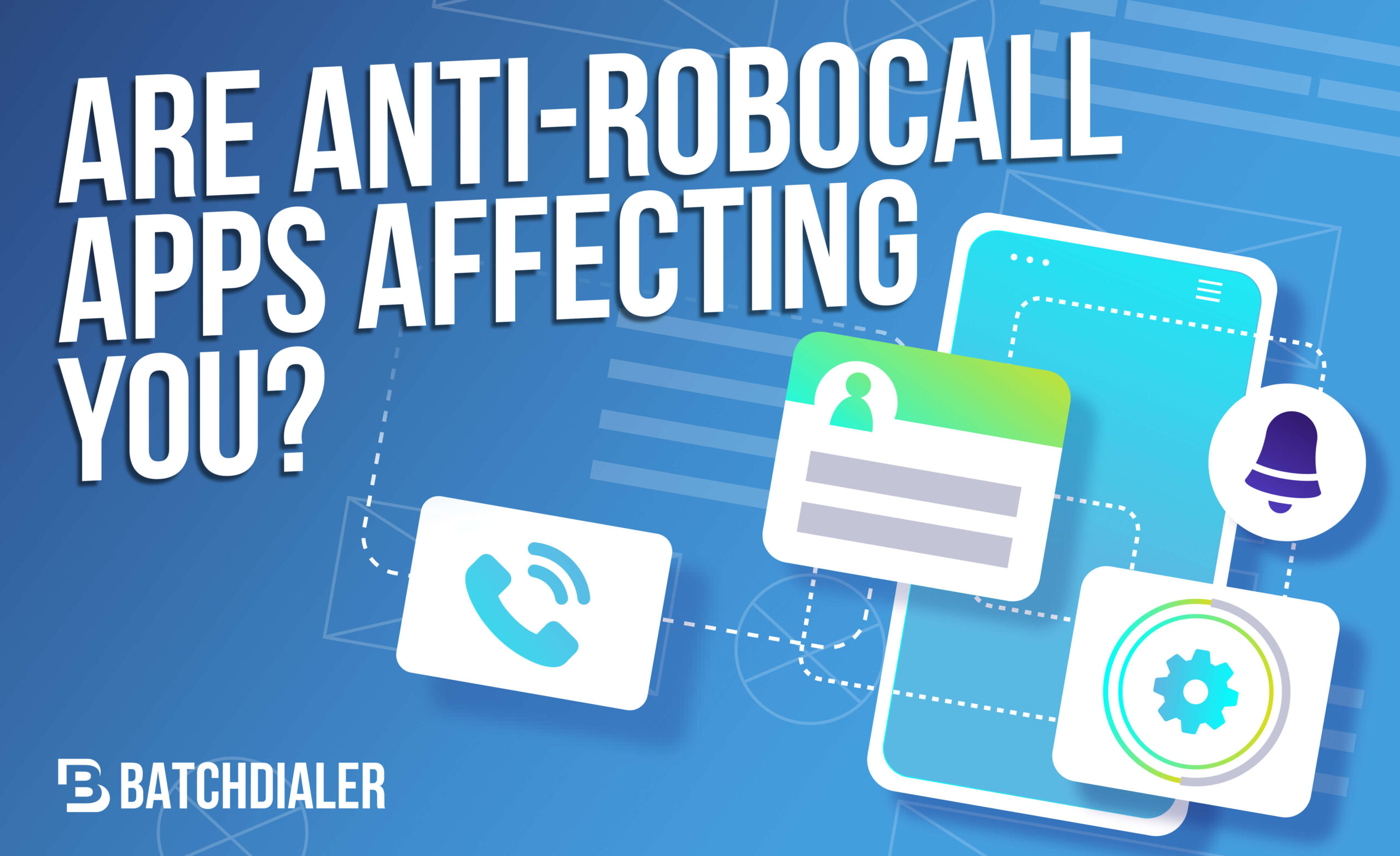Overview
As Americans become overwhelmed with the number of spam calls they get, anti-robocall applications are more popular than ever. These apps automatically block and label incoming calls that pass through the carrier’s protections but look suspicious to the application’s algorithms.
Every anti-robocall app works differently. They incorporate different technologies to consider different call data and weigh each factor differently. However, user feedback, basic call data, and even call recordings can all be important factors in how anti-robocall apps determine which calls to flag and block.
Because these applications are more popular than ever before, it’s important to understand not only how they work but also how to avoid being blocked by them. While the most important piece is to not engage in illegal or unethical calling, there is also legitimate activity that can still get you flagged as a spammer.
What Are Anti-Robocall Applications?
Anti-robocall applications are smartphone apps that label and block suspicious calls coming into users’ phones. They use a combination of call data and user feedback to identify which calls come from suspicious sources. Some applications offer additional services as well, such as call transcription.
Some anti-robocall applications are offered by phone carriers. For example, AT&T’s Call Protect application puts a “V” next to verified phone numbers and gives users the option to block suspicious phone numbers or send them directly to voicemail.
However, third-party applications are also popular with many users. These applications usually go the extra mile to prove their worth to users beyond the options carriers already offer. That means that they may collect additional data or use the same data more aggressively in order to show that they are stopping more calls than other applications.
Third-party applications can also offer additional services. Some transcribe calls for users, while others offer text blocking or more customizability. Some apps also keep users updated about current scams and provide other education and services to help people avoid being scammed by malicious callers.
How Anti-Robocall Apps Work
Data Collection
All anti-robocall applications collect some call data in order to decide which calls to block, but the exact calculations they make are proprietary. Typically, the most important consideration is user feedback-after a call, users have the option to submit a report on whether they felt the call was spam.
Apps will aggregate this user feedback into their databases in order to determine what phone numbers see enough suspicious activity to block or label as spam. The exact threshold for labeling and blocking can vary from application to application, but it’s important to know that there is no standard for evidence other than the user’s word, so false reports are taken just as seriously as true ones.
Some applications also collect data from call recordings. These might advertise that they take a “voiceprint” that will recognize scammers individually, even if they are using different phone numbers. These applications keep details about this technology secret, so it’s unclear exactly how they previously identify an individual as a scammer, and if there are ways to appeal that label.
Others use call recordings for human reviews of suspected scam calls. Live reviews are the highest-quality way of ensuring that only true scammers are labeled and blocked as such. This is probably the most resource-intensive and therefore least common way of identifying scam calls.
Call Blocking and Labeling
Once an anti-robocall app has identified a spam or scam caller, it labels or blocks the call. Usually, a label will appear as a message like “Scam Likely,” possibly with a red screen, where a blocked call will only appear in the app after the call has been blocked.
Often, anti-robocall apps allow users the ability to choose between several ways they can treat blocked calls. Normally, a blocked call might be sent directly to a message saying that the number is unavailable. But users might choose to send those calls to their voicemail, or connect them with a prerecorded message that might sound like a live person at first, but is meant to waste the caller’s time.
How to See if Anti-Robocall Applications Are Affecting You
Call Statistics
One good way to see if anti-robocall apps are affecting you is by looking at your call statistics. A sudden dropoff in call response rates with certain caller IDs would certainly indicate that something is interfering with your calls, but a more detailed analysis would be necessary to find the root cause.
For example, a carrier could be blocking or labeling calls. But if your calls aren’t being more affected by one carrier than another and aren’t seeing as severe a drop as you’d expect from a carrier-wide label or block, anti-robocall applications might be the cause of the dropoff.
Identifying certain thresholds of response rates will help you identify whether a phone number is being affected by anti-robocall apps. This analysis of call statistics can help you identify problems quickly and take decisive action before they begin seriously affecting your callers’ ability to do their work.
Caller Feedback
Unfortunately, sometimes the call statistics aren’t that clear. Some applications will send a call to an automated, prerecorded message instead of rejecting the call or sending it to voicemail. Oftentimes, these messages are meant to sound like someone answering the phone, with the purpose of wasting the caller’s time.
When an application sends a call to this type of prerecorded message, it registers as an answered call in most phone systems. That can make it difficult to identify at scale-after all, an increase in answered calls is unlikely to raise red flags.
Instead, the influence of this type of anti-robocall application is best identified through caller feedback. Only reporting call outcomes at scale will help identify patterns of callers that get sent to prerecorded messages from anti-robocall apps.
Anti-Robocall Application Data
Because of these difficulties in detecting anti-robocall applications’ impacts on callers, those same applications sell data on what numbers they label and block. Ultimately, this is the most accurate way to be certain about how a certain application might be affecting your calls’ response rates.
However, the anti-robocall application market doesn’t have a single, clear leader. Instead, there are many similar offerings from companies that have their own, private lists of numbers they label and block. That means that in order to gain a full understanding of how anti-robocall applications are affecting your calls, any caller would need to pay every major application for their data.
Summary
- Anti-robocall applications are third-party apps that label and block suspicious calls for users.
- Anti-robocall apps can use call data, call recordings, and user feedback to identify which numbers to block and label.
- The best way to see if these applications are affecting you is by examining call statistics, caller feedback, and data bought from those same applications.



